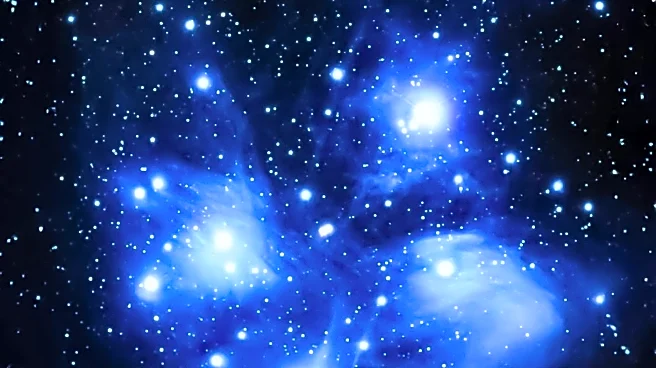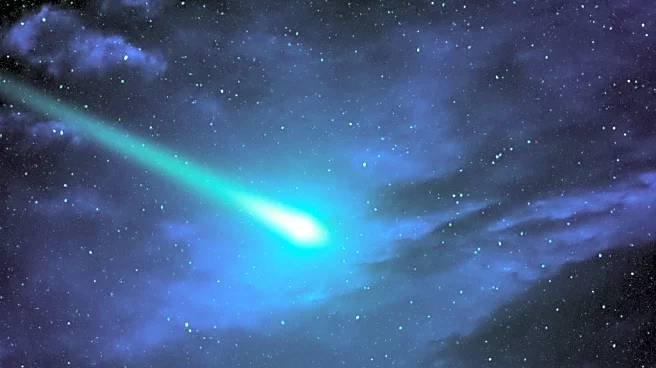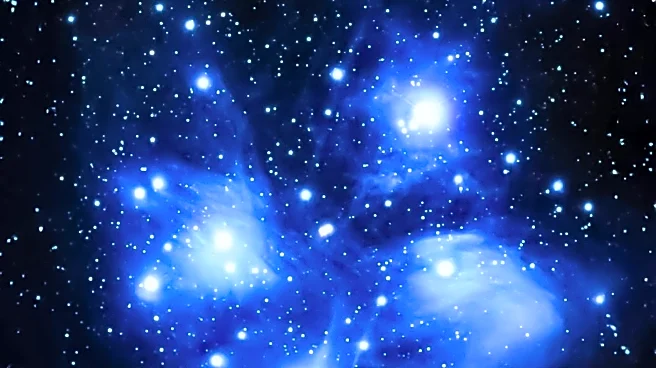What is the story about?
What's Happening?
The moon is set to pass close to the Pleiades open star cluster in the early morning hours of August 16-17. On August 16, the moon will be positioned approximately 5 degrees to the upper right of the Pleiades, and by August 17, it will move to about 5 degrees to the lower left. The Pleiades, also known as the 'Seven Sisters', may be difficult to spot due to moonlight, but using averted vision or a smartphone astronomy app can aid in locating it. Stargazers can use binoculars or telescopes to view the Pleiades and the moon's surface features, including craters like Kepler and Copernicus.
Why It's Important?
This celestial event provides an opportunity for stargazers to observe the Pleiades star cluster alongside the moon, enhancing interest in astronomy and skywatching. The event highlights the use of technology, such as smartphone apps and telescopes, to explore the night sky, potentially increasing public engagement with astronomy. It also underscores the importance of understanding celestial movements and their visibility, which can inspire educational activities and community events centered around astronomy.
What's Next?
As the moon continues its journey, it will move further away from the Pleiades in the nights following August 17, leading up to its new moon phase. Stargazers may plan to observe other celestial events and use this opportunity to deepen their understanding of the night sky. Astronomy enthusiasts might also prepare for future skywatching events, utilizing technology and equipment to enhance their observations.
Beyond the Headlines
The event encourages a broader appreciation for the night sky and the natural phenomena that occur within it. It may inspire discussions on the cultural significance of star clusters like the Pleiades, which have been referenced in various mythologies and traditions. Additionally, it highlights the role of technology in modern astronomy, allowing for more accessible and detailed observations.
AI Generated Content
Do you find this article useful?












